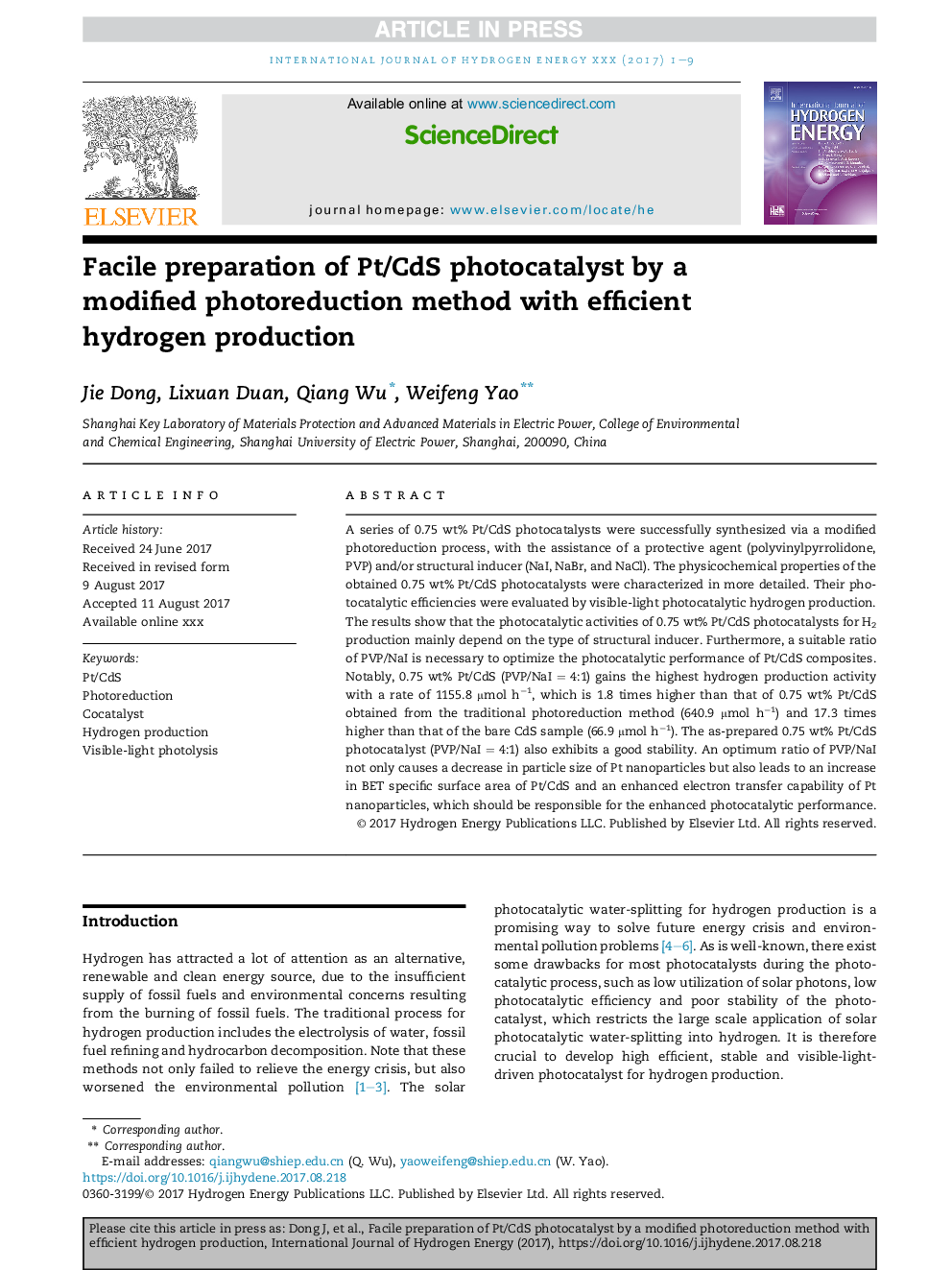| Article ID | Journal | Published Year | Pages | File Type |
|---|---|---|---|---|
| 7708168 | International Journal of Hydrogen Energy | 2018 | 9 Pages |
Abstract
A series of 0.75 wt% Pt/CdS photocatalysts were successfully synthesized via a modified photoreduction process, with the assistance of a protective agent (polyvinylpyrrolidone, PVP) and/or structural inducer (NaI, NaBr, and NaCl). Their photocatalytic efficiencies were evaluated by visible-light photocatalytic hydrogen production. The results show that the photocatalytic activities of 0.75 wt% Pt/CdS photocatalysts for H2 production mainly depend on the type of structural inducer. Furthermore, a suitable ratio of PVP/NaI is necessary to optimize the photocatalytic performance of Pt/CdS composites. Notably, 0.75 wt% Pt/CdS (PVP/NaI = 4:1) gains the highest hydrogen production activity with a rate of 1155.8 μmol hâ1, which is 1.8 times higher than that of 0.75 wt% Pt/CdS obtained from the traditional photoreduction method (640.9 μmol hâ1) and 17.3 times higher that of the bare CdS sample (66.9 μmol hâ1). The as-prepared 0.75 wt% Pt/CdS photocatalyst (PVP/NaI = 4:1) also exhibits a good stability. An optimum ratio of PVP/NaI not only causes a decrease in particle size of Pt nanoparticles but also leads to an increase in BET specific surface area of Pt/CdS and an enhanced electron transfer capability of Pt nanoparticles, which should be responsible for the enhanced photocatalytic performance.290
Related Topics
Physical Sciences and Engineering
Chemistry
Electrochemistry
Authors
Jie Dong, Lixuan Duan, Qiang Wu, Weifeng Yao,
